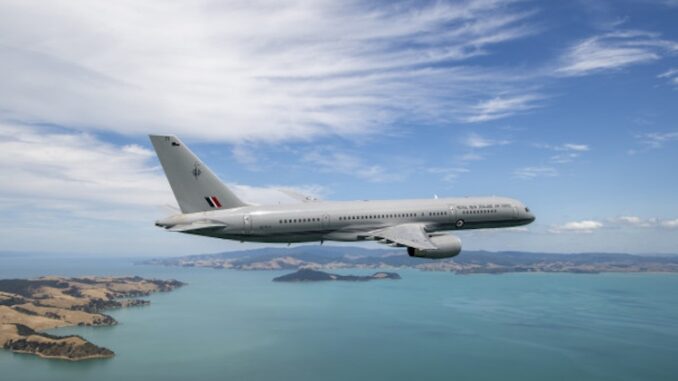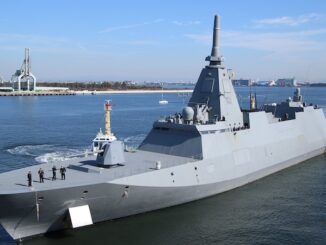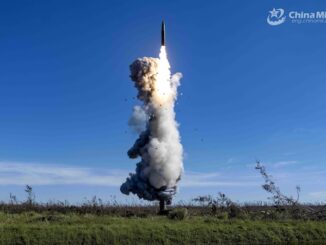
There can be little doubt that the soon to be released Defence Capability Plan will require substantial new expenditure over the next decade, writes Dr Wayne Mapp.
The defence and foreign policy of New Zealand has two major issues that will need to be dealt with in the near future. The first is whether or not New Zealand will join Pillar 2 of AUKUS. The second is how will the government respond to the upcoming Defence Capability Plan.
The first issue is as much a foreign policy issue as a defence issue. The decision of whether or not to join Pillar 2 of AUKUS will set New Zealand’s foreign policy direction for at least the next two decades.
Joining means reaffirming that New Zealand remains firmly in the Five Eyes camp. If Canada joins that will help ameliorate the concerns expressed by some commentators. It would mean that all Five Eyes partners are engaged in Pillar 2 of AUKUS.
Not joining won’t be New Zealand simply saying it has an independent foreign policy. New Zealand would be turning our back on our one ally and upon our longest standing defence partners. Australia, in particular, may consider us an ally in name only; that the ANZAC defence relationship is one of formalism rather than of substance.
Read it in the digital edition…
Beijing seems to have approached this issue in a rather ham fisted way. Why did the Chinese ambassador directly say that New Zealand should not join Pillar 2?
The lack of subtlety means that if New Zealand chose not to join Pillar 2, it would look like New Zealand had followed Beijing’s dictates, rather than the entreaties of our longest standing partners. Hardly the mark of an independent foreign policy.
The decision of whether or not to join Pillar 2 will be made by the current government, that is, within the next two years. As a general principle, the decisions of one government in relation to formal foreign policy commitments bind succeeding governments.
“Is it reasonable to continue with only two frigates? Should the replacements for the Canterbury and the two Offshore Patrol Vessels be more substantially capable?”
However, will the next government (Labour, the Greens and Te Pati Maori) consider themselves bound by the current government’s decisions? All three parties have expressed opposition to Pillar 2, particularly the Greens and Te Pati Maori. Labour will be well aware that they can’t just walk away from New Zealand’s one ally. More likely there would be a more nuanced participation in Pillar 2 rather than actual withdrawal.
The upcoming Defence Capability Plan will be among the most important defence documents that the Minister of Defence will deal with during this term of government. The decisions that she and her Cabinet colleagues make stemming from the Plan will set in train the shape of defence for the next 20 or more years.
The continuing failure of the RNZAF Boeing 757s shows that the government must act on the Capability Plan. Deferring or delaying crucial decisions will lead to more embarrassing failures, and a loss in confidence by both the people of the Defence Force and the wider public that the NZDF actually has the right tools for the job.
The signs are already positive. The pre-Budget announcements on the upgrade of the NH 90 helicopters show that the government is serious about ensuring that the Defence Force has the most up to date equipment. It means the Defence Force can fully interoperate with Australia and our other important defence partners, notably the Five Eyes nations.
There can be little doubt that the Capability Plan will require substantial new expenditure over the next decade, particularly in the capital-intensive services, the Air Force and the Navy.
Virtually the entire Navy fleet will need replacement ships. Both the Project Protector fleet and the ANZAC frigates need to be replaced within the next decade. This means a minimum of five ships just to maintain the existing fleet. Any significant upgrade will mean either more ships or the same number but with more capability. Or perhaps both.
Is it reasonable to continue with only two frigates? Should the replacements for the Canterbury and the two Offshore Patrol Vessels be more substantially capable?
If the answer is that more is needed, whether more ships or more capability, that will come with a big price tag. The total capital cost of these ships could easily exceed $10 billion. Just about all of this sum would need to be spent within the next decade.
When coupled with the capital requirements for the Army and Air Force, the total capital requirement for the Defence Force during the next decade is likely to exceed $20 billion. Although a large percentage of this sum will come from accumulated depreciation, there is no doubt that there will need to be a substantial injection of new capital.
My column in the Autumn edition of Line of Defence indicated that an extra $400 million capital injection will be required each year over the next decade. That would lift defence spending to 1.4% of GDP, up from the current 1.3%.
However, all that will do is ensure that existing capabilities will be replaced on a one for one basis as they come to the end of their life. It makes no allowance for actually expanding capabilities. For instance, three frigates instead of two.
If New Zealand is to follow the example of our defence partners and actually increase capability, even to a modest extent, that will require a significant new investment, both in people and equipment. A third frigate would cost as much as $3 billion, or $300 million each year for the next ten years. It is close to an additional 0.1% of GDP per year and would, lift defence expenditure to 1.5% of GDP.
This level was achieved in 2020 and 2021 when much of the expenditure on the Poseidon P8 and Hercules C130J was made. A properly resourced Capability Plan would require a permanent lift in defence expenditure to 1.5% of GDP. This will affect not just the current government, but likely the next one as well.
Within the broader frame of government expenditure, defence spending at 1.5% of GDP can be largely achieved within the current settings. Effectively it means defence spending would be 4.5% of total government spending instead of the current 4%. Given that major defence purchase decisions take time to implement before the money is actually spent, government has the time to plan for this change in national priorities.









